The yellow Congo tetra (Alestopetersius caudalis) is a popular and frequently offered ornamental fish. The species originates from the Congo, where it is at home in the lower reaches of the African river. Wild-caught fish are very rare in the trade. The species was first imported around 1950 and was soon bred. The animals in the trade today are almost without exception captive-bred, mostly from Indonesia, but other professional breeders in Europe and Asia also have the species in their range.
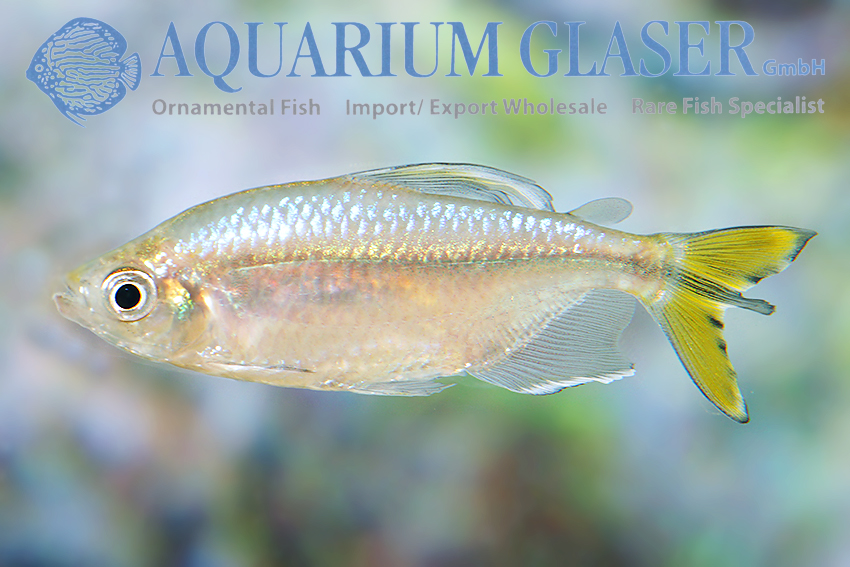
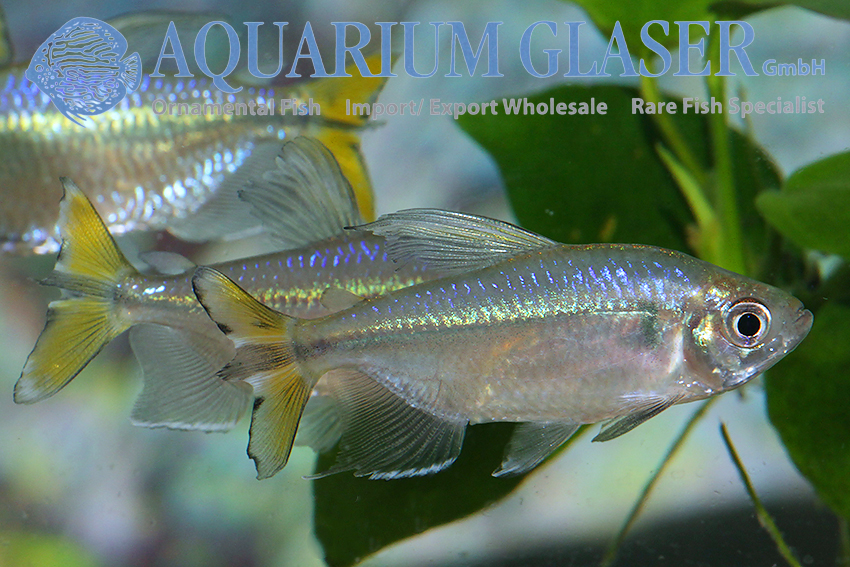
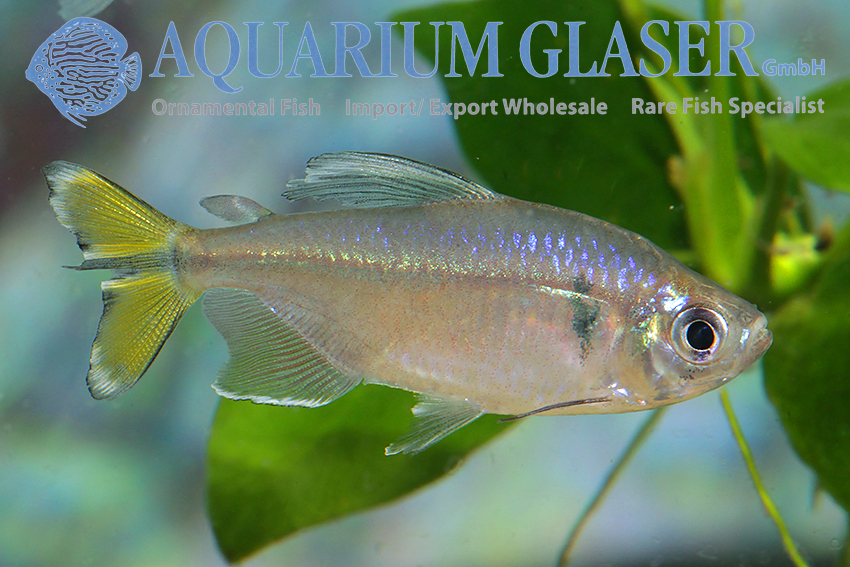
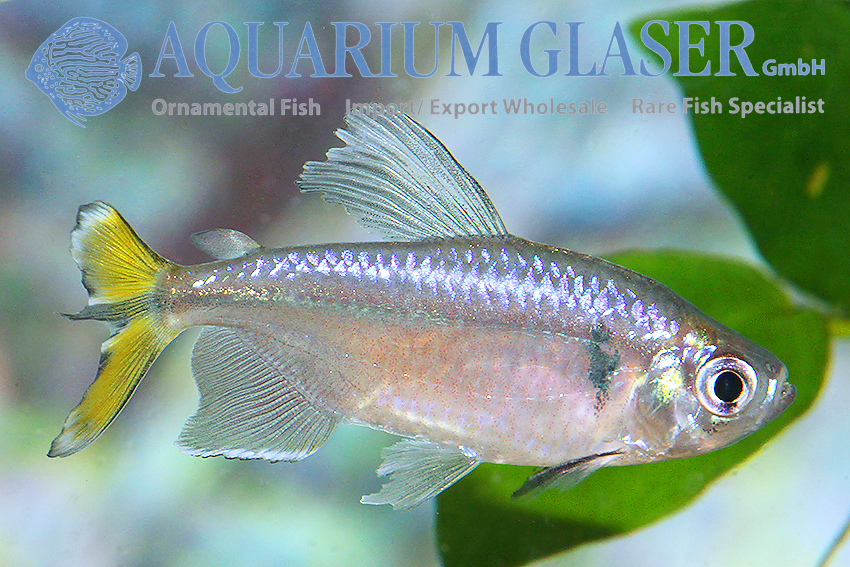
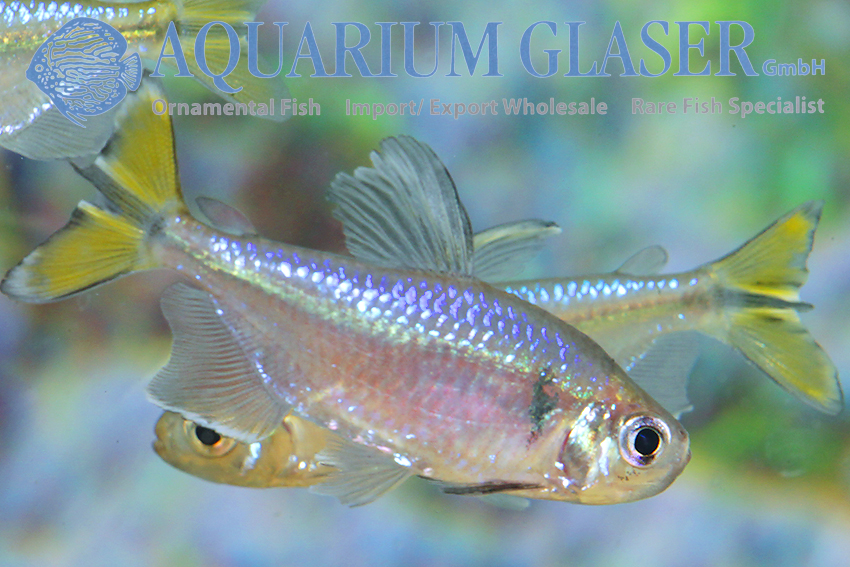
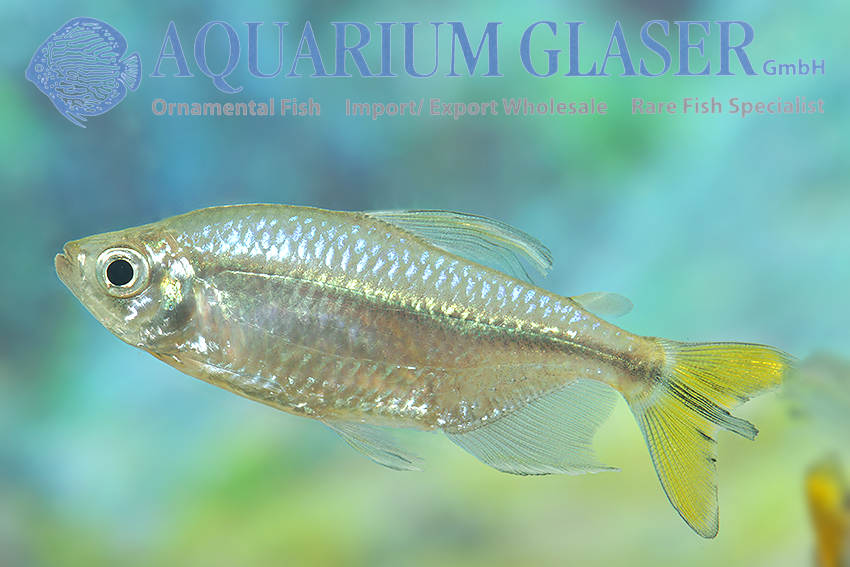
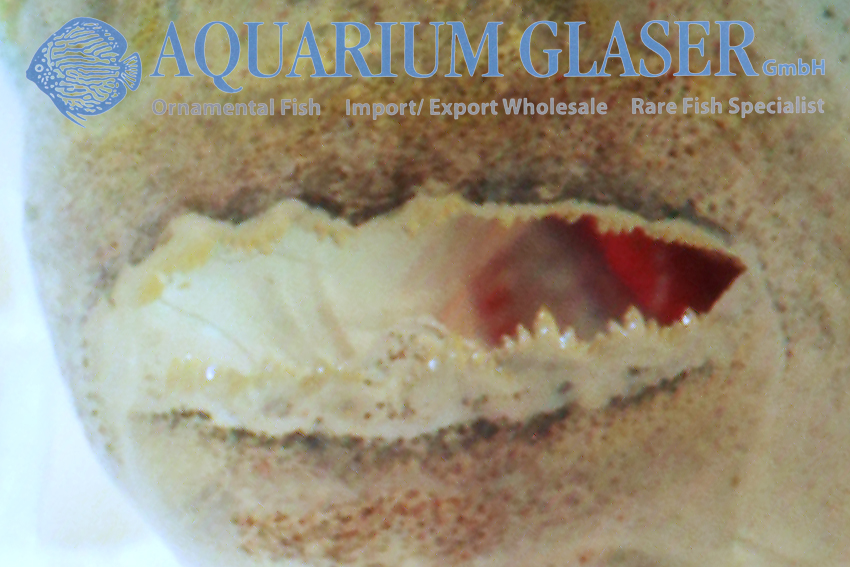
On the occasion of the presentation of a small video (https://www.youtube.com/watch?v=7uXLpgRDoME), the question was raised via the comments function as to whether the animals shown (captive-bred from Indonesia) are not Alestopetersius tumbensis rather than A. caudalis. In fact, the two species are extremely similar and they also occur together – at least in places. From a scientific point of view, the most important difference between the two is the shape of the teeth: five-pointed in caudalis, many-pointed (8-9 points) in tumbensis. The different tooth shape was considered so important that a separate genus Duboisialestes was even established for tumbensis (plus bifasciatus). In addition, preserved specimens can be distinguished by their black markings. In A. caudalis, a broad dark longitudinal band extends from the shoulder patch to the caudal fin, whereas in A. tumbensis the longitudinal band is much narrower and there is a clear gap between the shoulder patch and the longitudinal band. Unfortunately, you can’t see this at all in live specimens, or can only see a hint of it.
The question came as a surprise to us, because although the species A. tumbensis (the genus Duboisialestes was declared a synonym of Alestopetersius by Munene & Stiassny in 2012) was described in 1951 on the basis of specimens imported into the Netherlands for the ornamental fish trade, it has not been mentioned in the hobby since then as far as we know. We do not kill animals for identification purposes, but we were able to recognize the shape of the teeth from a macro photograph of the mouth of one of our fish: clearly five-pointed, i.e. A. caudalis.
The exact species identification of African small tetras is and remains a complex matter. Not only aquarists have difficulties with this, but also professional ichthyologists. The markings given in the scientific papers (especially black bands, stripes etc.) are, as already mentioned, often only vaguely recognizable or not recognizable at all in living animals. The lesson for us from this story is that we will look twice as closely the next time we import wild-caught yellow Congo tetras. Perhaps we will discover A. tumbensis among them and then be able to provide a live photo of the species (as far as we know, none exists so far). Who knows, maybe you can also see differences between the two species in live animals …
By the way: general information on Alestopetersius caudalis can be found here: https://www.aquariumglaser.de/en/fisharchive/alestopetersius-caudalis-2/
For our customers: the animals shown in this post, captive bred from Indonesia, have code 138004 (xlg) on our stocklist. Please note that we only supply the wholesale trade.
Literature:
Boulenger, G. A. (1899): Matériaux pour la faune du Congo. Zoologie.–Série I. Poissons nouveaux du Congo. Quatrième Partie. Polyptères, Clupes, Mormyres, Characins. Annales du Musee du Congo (Ser. Zoologie) v. 1 (fasc. 4): 59-96, Pls. 30-39.
Géry, J. (1995): Description of new or poorly known Alestinae (Teleostei: Characiformes: Alestidae) from Africa, with a note on the generic concept in the Alestinae. aqua, Journal of Ichthyology and Aquatic Biology v. 1 (no. 4): 37-64.
Hoedeman, J. J. (1951): Studies on African characid fishes I. The tribe Alestidi. Beaufortia v. 1 (no. 3): 1-8.
Mbimbi Mayi Munene, J. J. & M. L. J. Stiassny (2012): A new Alestopetersius (Characiformes: Alestidae) from the Kwilu River (Kasai basin) of central Africa; with a phylogeny for the genus and synonymy of Duboisialestes. Zootaxa No. 3166: 59-68.
Poll, M. (1967): Révision des Characidae nains Africans. Annales, Musée Royal de l’Afrique Centrale, Tervuren, Série in 8o, Sciences Zoologiques No. 162: 1-158
Text & photos: Frank Schäfer




